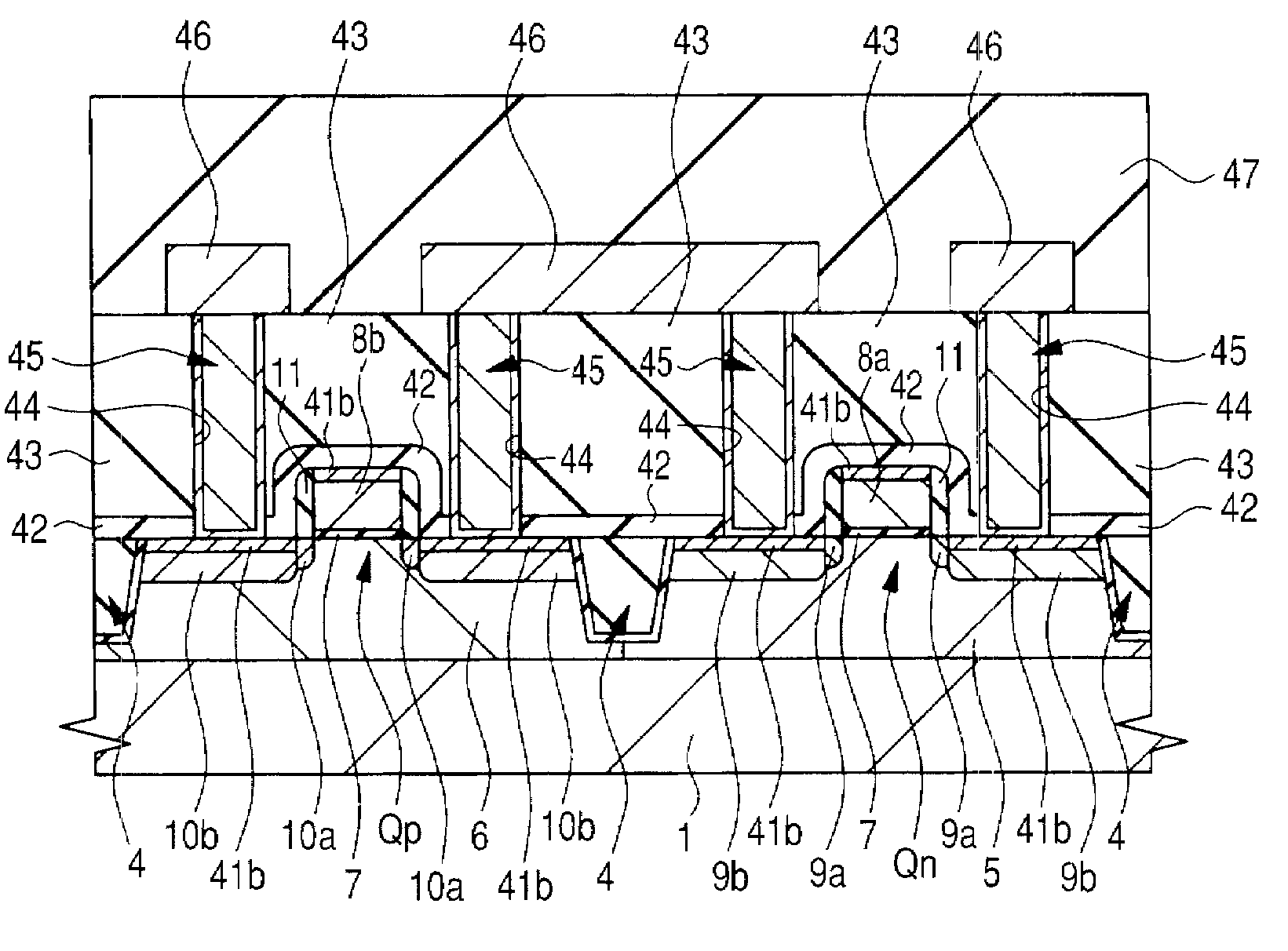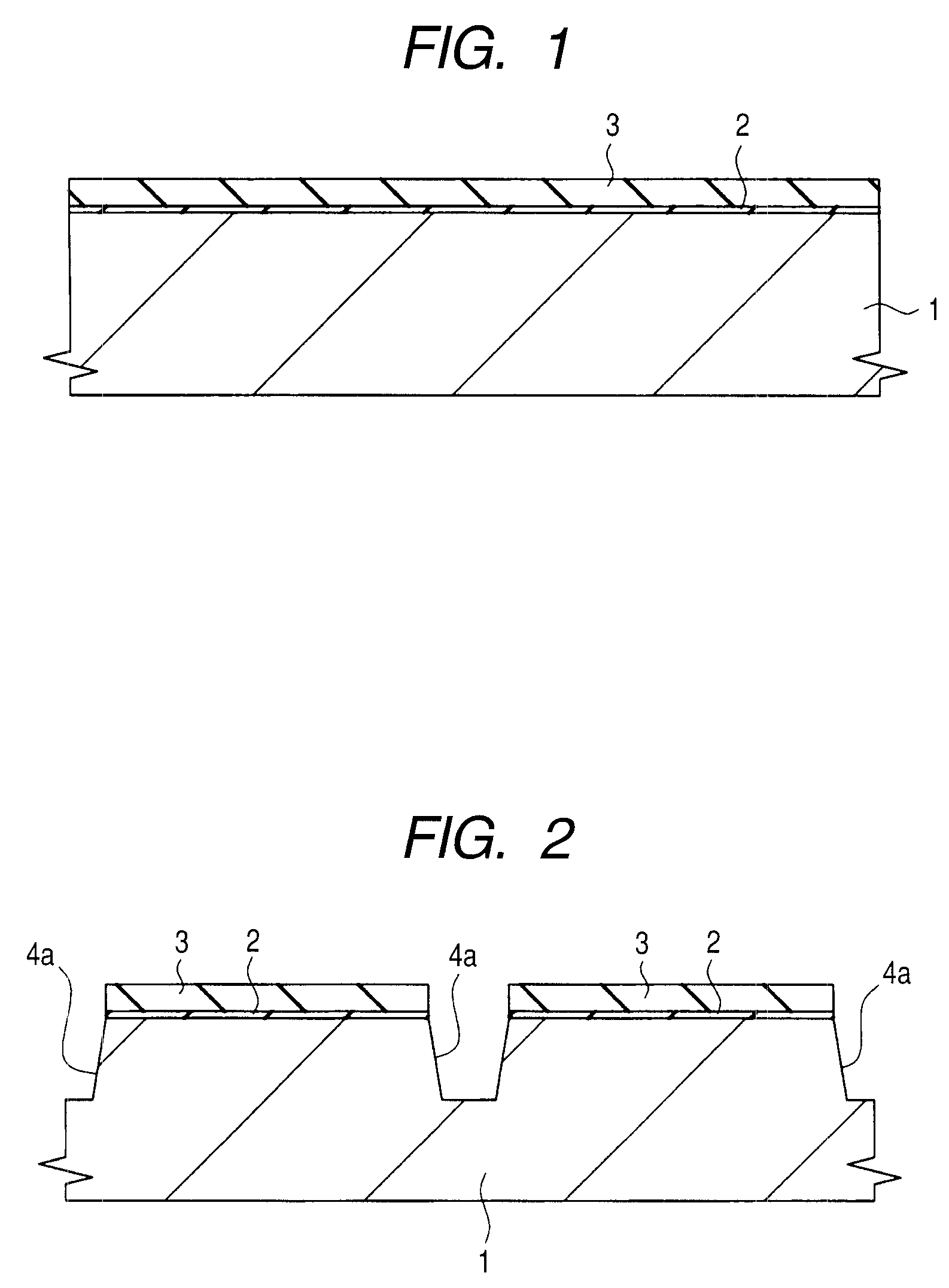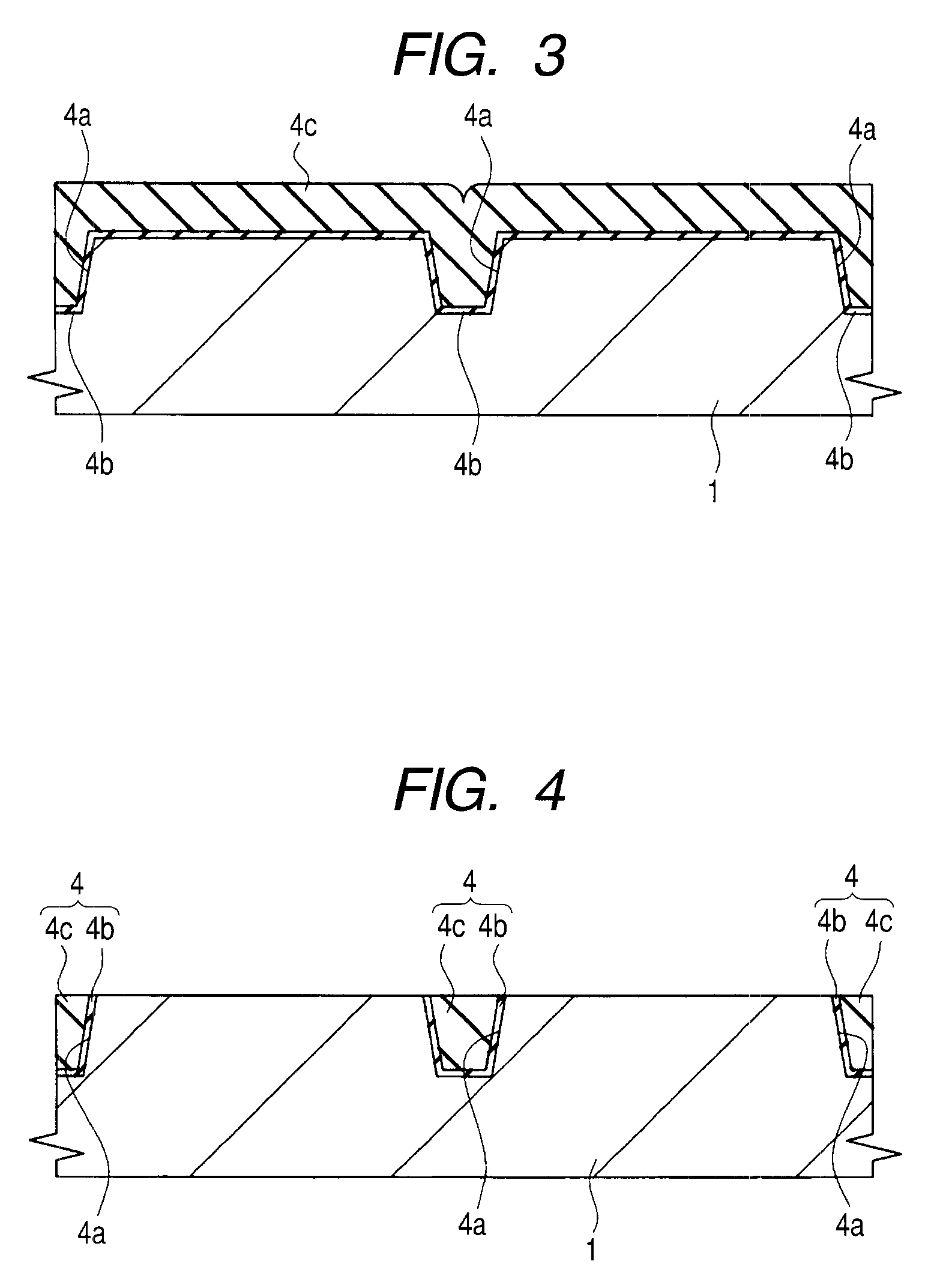Manufacturing method of semiconductor device
a manufacturing method and semiconductor technology, applied in the direction of semiconductor devices, electrical equipment, basic electric elements, etc., can solve the problems of source/drain increase and inability to achieve high-speed operation, and achieve the effect of improving the performance of the semiconductor devi
- Summary
- Abstract
- Description
- Claims
- Application Information
AI Technical Summary
Benefits of technology
Problems solved by technology
Method used
Image
Examples
embodiment 1
[0059]The manufacturing process of the semiconductor device of this embodiment is explained with reference to drawings. FIG. 1-FIG. 8 are the principal part cross-sectional views in the manufacturing process of the semiconductor device which is the 1 embodiment of the present invention. For example, they are principal part cross-sectional views in the manufacturing process of the semiconductor device which has CMISFET (Complementary Metal Insulator Semiconductor Field Effect Transistor).
[0060]First, as shown in FIG. 1, semiconductor substrate (semiconductor wafer) 1 which consists of p type single crystal silicon which has the specific resistance of about 1˜10Ω cm is prepared. Next, this semiconductor substrate 1 is oxidized thermally and insulation film 2 of about 10 nm thick is formed in the front surface. Then, insulation film 3 of about 100 nm thick is deposited on the upper layer by the CVD (Chemical Vapor Deposition) method etc., for example. Insulation film 2 consists of sili...
embodiment 2
[0164]FIG. 25 is a manufacture process-flow chart showing a part of manufacturing process of the semiconductor device of this embodiment, and corresponds to the FIG. 9 of above-mentioned Embodiment 1. After the structure of the above-mentioned FIG. 7 is acquired, the manufacture process flow of the step which forms a metal silicide layer (metal and semiconductor reaction layer) in the front surface of gate electrodes 8a and 8b, n+ type semiconductor region 9b, and p+ type semiconductor region 10b according to a salicide process is shown in FIG. 25. FIG. 26-FIG. 29 are the principal part cross-sectional views in the manufacturing process of the semiconductor device of this embodiment.
[0165]Until the step which removes barrier film 13 and unreacted metallic film 12 by performing a wet cleaning treatment at the above-mentioned step S4, the step of the manufacturing process of the semiconductor device of this embodiment is the same as that of above-mentioned Embodiment 1. Therefore, the...
embodiment 3
[0179]FIG. 30 is a manufacture process-flow chart showing the manufacturing process of the semiconductor device of this embodiment, and corresponds to the FIG. 9 of above-mentioned Embodiment 1, or the FIG. 25 of above-mentioned Embodiment 2. The manufacture process flow of the step which forms a metal silicide layer (metal and semiconductor reaction layer) in the front surface of gate electrodes 8a and 8b, n+ type semiconductor region 9b, and p+ type semiconductor region 10b according to a salicide process after the structure of the above-mentioned FIG. 7 is acquired is shown in FIG. 30. FIG. 31-FIG. 34 are the principal part cross-sectional views in the manufacturing process of the semiconductor device of this embodiment.
[0180]Until the step which forms barrier film 13 at the above-mentioned step S2, the step of the manufacturing process of the semiconductor device of this embodiment is the same as that of above-mentioned Embodiment 1. Therefore, the explanation is omitted here an...
PUM
| Property | Measurement | Unit |
|---|---|---|
| temperature | aaaaa | aaaaa |
| temperature | aaaaa | aaaaa |
| thickness | aaaaa | aaaaa |
Abstract
Description
Claims
Application Information
 Login to View More
Login to View More - R&D
- Intellectual Property
- Life Sciences
- Materials
- Tech Scout
- Unparalleled Data Quality
- Higher Quality Content
- 60% Fewer Hallucinations
Browse by: Latest US Patents, China's latest patents, Technical Efficacy Thesaurus, Application Domain, Technology Topic, Popular Technical Reports.
© 2025 PatSnap. All rights reserved.Legal|Privacy policy|Modern Slavery Act Transparency Statement|Sitemap|About US| Contact US: help@patsnap.com



